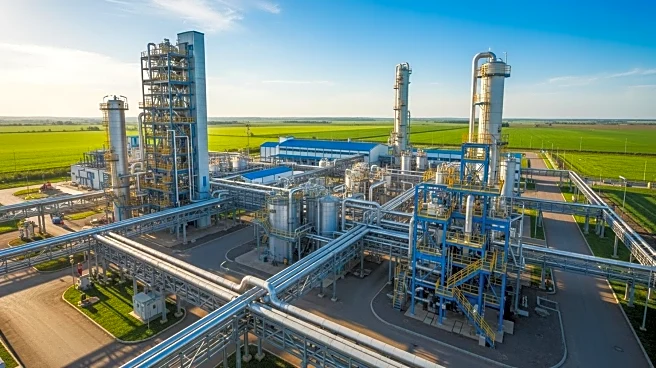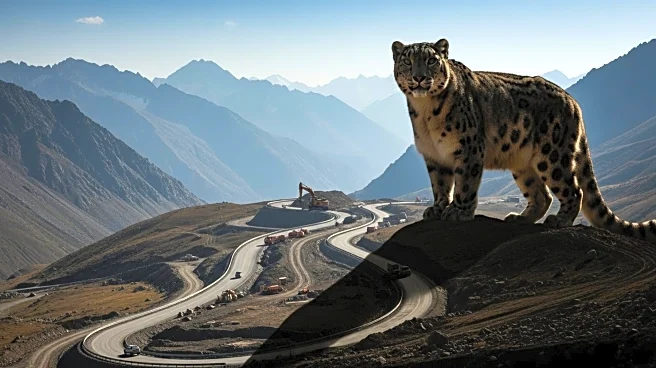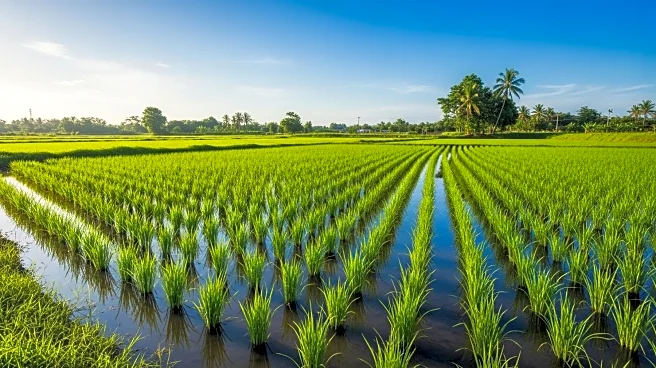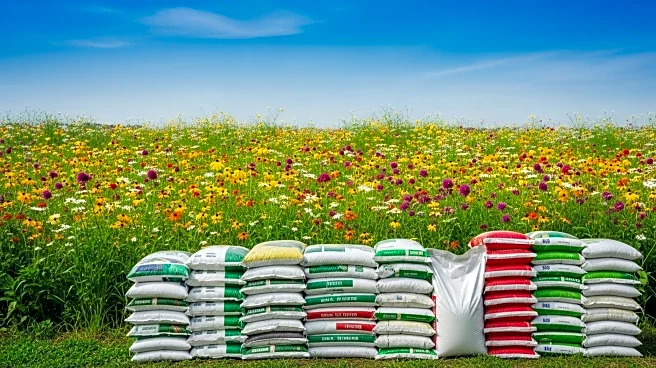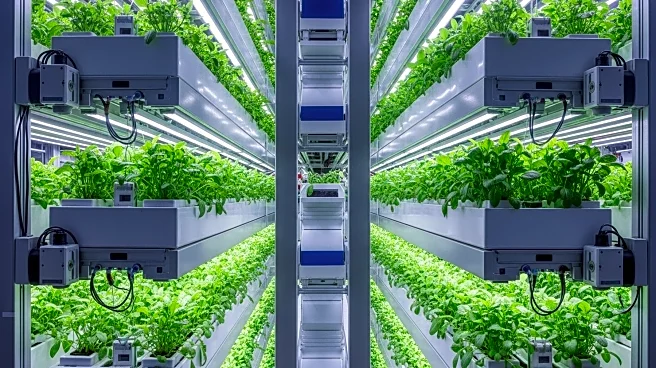What's Happening?
Nepal Rastra Bank's latest sectorwise credit report for mid-August 2025 indicates a significant shift in the country's credit distribution patterns. Agriculture loans have decreased by 1.4%, bringing the total to Rs. 412.1 billion. This decline reflects a slowdown in borrowing for farming, livestock, and agro-services, attributed to lower seasonal demand, tighter collateral-based lending, and cautious banking exposure to volatile agricultural returns. In contrast, loans in the production sector have increased by 0.8%, reaching Rs. 890.8 billion, driven by industries such as cement, iron and steel, textiles, and processed foods. The construction sector also saw a 0.6% rise in outstanding loans, crossing Rs. 232.8 billion, mainly due to increased financing in infrastructure, urban housing, and heavy construction projects.
Why It's Important?
The shift in credit distribution highlights a rebalancing of financial resources in Nepal, with more funds being channeled into capital-intensive and revenue-generating sectors like manufacturing and construction. This trend suggests increased confidence in medium to large-scale enterprises and a focus on industrial and infrastructural development. However, the contraction in agriculture loans could have implications for rural economies and small-scale farmers, potentially affecting food production and rural livelihoods. The mixed performance in the service sector, with growth in healthcare and tourism but declines in hotel and education financing, further underscores the evolving economic landscape.
What's Next?
As financial institutions continue to adjust their lending strategies, the focus may remain on supporting sectors with higher returns and growth potential. This could lead to further expansion in industrial and infrastructural projects, while agriculture and microfinance sectors might face continued challenges in accessing credit. Policymakers and stakeholders may need to address the potential impacts on rural communities and consider measures to support sustainable agricultural practices and rural development.
Beyond the Headlines
The ongoing credit rebalancing in Nepal reflects broader economic shifts that could influence long-term development strategies. The emphasis on industrial and infrastructural growth aligns with global trends towards urbanization and modernization. However, the reduced focus on agriculture raises questions about food security and the sustainability of rural economies. Balancing industrial growth with agricultural support will be crucial for ensuring inclusive economic development.

